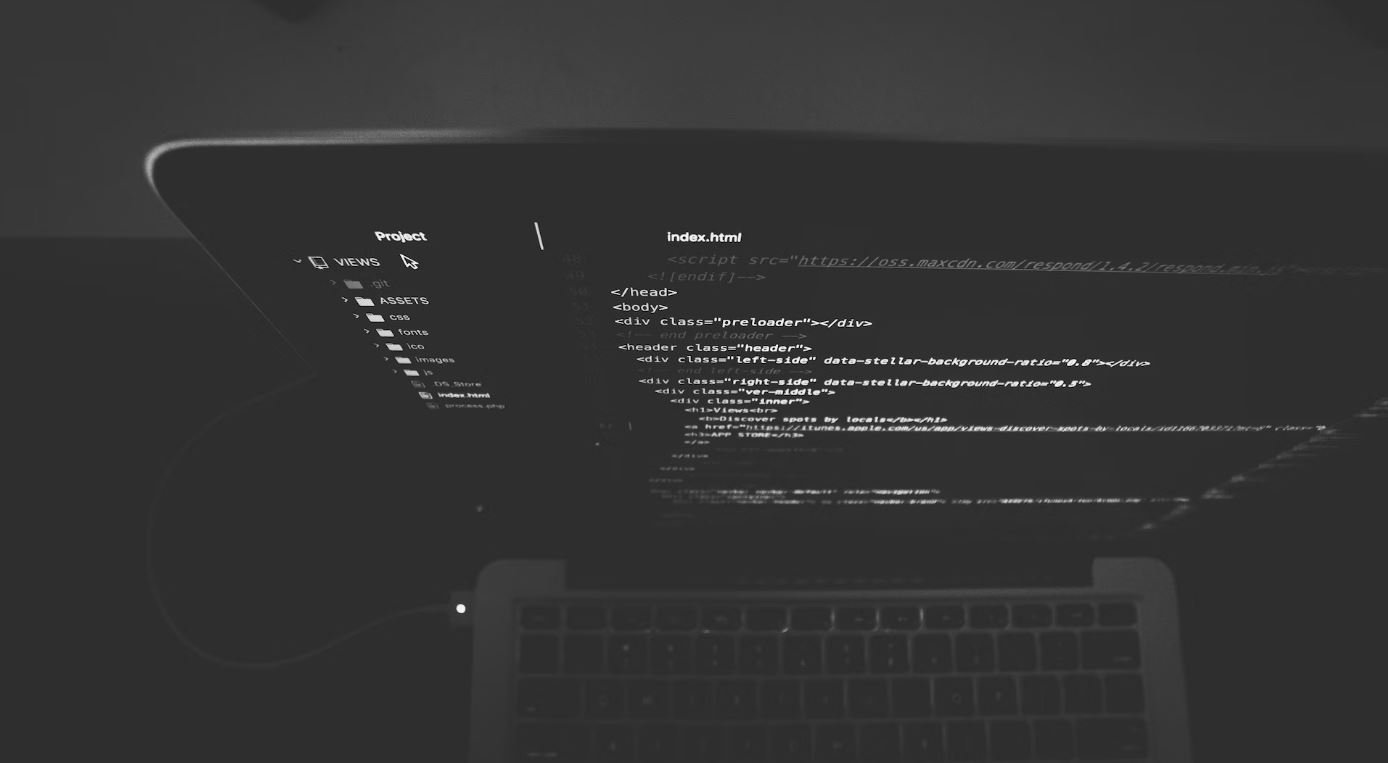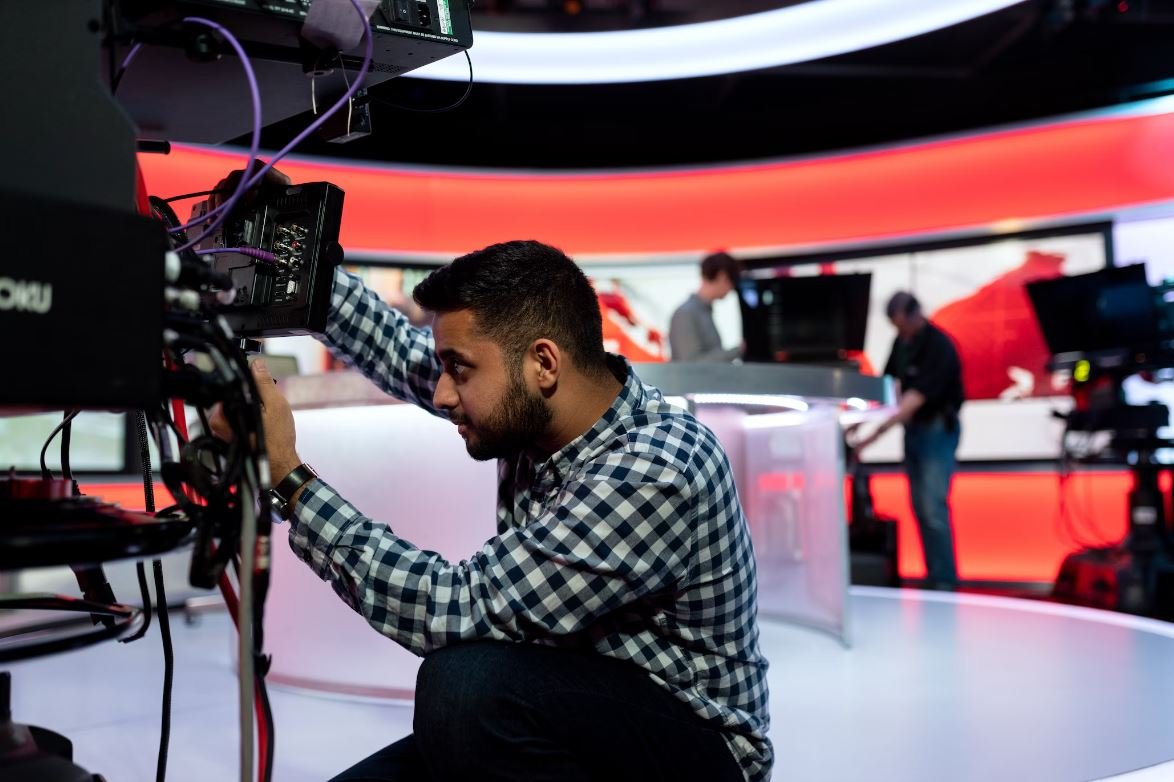Podcast Audio Recording Equipment
Podcasts have become increasingly popular in recent years, attracting audiences with their diverse range of topics and engaging storytelling formats. If you’re thinking about starting your own podcast, one key aspect you’ll need to consider is the audio recording equipment you’ll use. Good audio quality is crucial for podcast production, as it directly impacts the listener’s experience. In this article, we’ll explore the essential podcast audio recording equipment you’ll need to create professional-sounding episodes.
Key Takeaways:
- High-quality audio recording equipment is essential for creating professional-sounding podcasts.
- Microphones, headphones, and audio interfaces are fundamental tools for podcast recording.
- Room acoustics and pop filters can significantly improve the audio quality.
- In-home studios are becoming popular due to their convenience and cost-effectiveness.
*One interesting feature of podcasting is its ability to connect people from different parts of the world, creating a global community of listeners and content creators.*
Microphones
The microphone is the most crucial piece of equipment for podcast recording. It captures your voice and plays a significant role in determining audio quality. When choosing a microphone, consider whether you’ll be recording alone or with multiple hosts/guests and the environment in which you’ll be recording.
*Some microphones are specifically designed for vocal recording, resulting in a warm and crisp sound that captivates the listener.*
Here are three popular microphones used by podcasters:
| Microphone | Type | Price |
|---|---|---|
| Blue Yeti | USB Condenser | $129 |
| Audio-Technica ATR2100x | USB/XLR Dynamic | $99 |
| Rode PodMic | XLR Dynamic | $99 |
*These microphones offer excellent sound quality and versatility, allowing you to convey your message clearly and effectively.*
Headphones
While often overlooked, headphones play a vital role in podcast production. They allow hosts and editors to monitor audio quality, catch any issues, and ensure a well-balanced sound mix. Closed-back headphones are generally preferred for podcasting, as they provide better sound isolation and prevent leakage during recording sessions.
*Investing in a good pair of headphones is a wise choice as they enhance the overall listening experience while recording and editing your podcast.*
Here are three popular headphones used by podcasters:
| Headphones | Type | Price |
|---|---|---|
| Sennheiser HD 280 Pro | Closed-Back | $99 |
| Beyerdynamic DT 770 Pro | Closed-Back | $159 |
| Audio-Technica ATH-M50x | Closed-Back | $149 |
*These headphones offer accurate sound reproduction, allowing you to detect even minor audio imperfections during editing.*
Audio Interfaces
An audio interface is a device that connects your microphone and headphones to your computer. It converts analog signals from the microphone into digital audio data that your computer can process. Audio interfaces come with built-in preamps, which amplify weak microphone signals, ensuring adequate recording levels.
*With audio interfaces, you can achieve professional sound quality by transforming your home recording setup into a sophisticated studio-like environment.*
Here are three popular audio interfaces used by podcasters:
| Audio Interface | Type | Price |
|---|---|---|
| Focusrite Scarlett 2i2 | USB | $159 |
| PreSonus AudioBox USB 96 | USB | $99 |
| Universal Audio Apollo Twin MKII | Thunderbolt | $699 |
*These audio interfaces offer excellent audio conversion and high-resolution recording capabilities, resulting in pristine audio quality for your podcast.*
Remember, in addition to the above equipment, optimizing room acoustics with sound-absorbing panels and using pop filters to reduce plosive sounds can further enhance your podcast’s audio quality. With the right equipment and attention to detail, you’ll be well on your way to hosting a successful and enjoyable podcast.
*So, take your podcasting journey to the next level with the right audio recording equipment, and let your voice be heard to audiences around the world.*

Common Misconceptions
About Podcast Audio Recording Equipment
There are several misconceptions that people have about podcast audio recording equipment. These misconceptions often lead to misinformation and confusion about what equipment is necessary for starting a podcast. Here are some common misconceptions and the truth behind them:
Misconception 1: Expensive equipment is necessary for good audio quality.
- Good audio quality depends on the microphone’s specifications and the acoustics of the recording environment.
- There are affordable microphones available that offer excellent sound quality.
- Paying more for equipment does not guarantee better audio quality.
Misconception 2: Professional audio editing software is required.
- There are several free or affordable audio editing software options available.
- Many beginners can achieve satisfactory results using basic editing software.
- Using professional software requires a learning curve and additional costs.
Misconception 3: Soundproofing the recording space is necessary.
- Soundproofing is not always necessary, especially for hobbyist podcasters.
- A well-treated recording space can improve sound quality, but it can be achieved without extensive soundproofing.
- Using sound absorption panels and placing the microphone optimally can help reduce unwanted echoes and external noises.
Misconception 4: Only expensive headphones provide accurate sound monitoring.
- The sound quality while recording is more critical than the quality of playback headphones.
- Affordable headphones can provide accurate sound monitoring for most podcasting needs.
- Expensive headphones may offer superior sound quality, but they are not essential for beginners or those on a budget.
Misconception 5: It is necessary to invest in a full studio setup.
- A professional studio setup is not required for starting a podcast.
- A quiet and well-equipped room with basic audio recording equipment is sufficient for most podcasters.
- Investing in a full studio setup can be costly and is usually unnecessary unless podcasting becomes a significant part of your profession.

Table Title: Popular Podcast Audio Recording Equipment
Table 1 provides a list of popular podcast audio recording equipment that is widely used by podcasters. Each item in the list represents high-quality equipment known for delivering exceptional audio recording capabilities.
| Equipment | Description | Price |
|---|---|---|
| Shure SM7B Cardioid Dynamic Microphone | Delivers warm and clear audio with minimal background noise. | $399 |
| Rode NT-USB Mini | A compact, versatile USB microphone with studio-quality sound. | $99 |
| Focusrite Scarlett 2i2 (3rd Gen) Audio Interface | An easy-to-use audio interface for connecting microphones and instruments to your computer. | $159 |
| Audio-Technica ATH-M50x Professional Studio Monitor Headphones | Renowned headphones with exceptional sound reproduction and comfort for long editing sessions. | $149 |
Table Title: Podcast Hosting Platforms Comparison
Table 2 compares various podcast hosting platforms, highlighting their key features and pricing structure. These platforms serve as a space for podcasters to store and distribute their audio files for easy access by listeners everywhere.
| Platform | Free Option | Storage Limit | Monthly Cost (Basic Plan) |
|---|---|---|---|
| Anchor | Yes | Unlimited | $0 |
| Libsyn | No | 50 MB/month | $5 |
| Podbean | No | 100 MB/month | $9 |
| Spreaker | Yes | 5 hours | $7 |
Table Title: Comparison of Podcast Recording Software
Table 3 showcases a comparison of popular podcast recording software, enabling users to record, edit, and enhance their audio files with ease. Choose the software that suits your needs and budget.
| Software | Cross-platform Support | Audio Editing Features | Price |
|---|---|---|---|
| Adobe Audition | Yes | Advanced editing and mixing | $20.99/month |
| Audacity | Yes | Basic editing functions | Free |
| GarageBand | Mac only | User-friendly interface | Free |
| Reaper | Yes | Extensive customization options | $60 (discounted license) |
Table Title: Recommended Podcast Microphones
Table 4 provides an overview of recommended podcast microphones based on specific requirements. Each microphone is designed to cater to different recording situations and preferences.
| Microphone | Recording Setting | Price |
|---|---|---|
| Blue Yeti | Home studio | $129 |
| Audio-Technica ATR2100x-USB | Portable recording | $99 |
| Rode PodMic | Quiet environments | $99 |
| Sennheiser MD 421 II | Professional studio | $379 |
Table Title: Podcast Audio Editing Software Comparison
Table 5 compares different podcast audio editing software, which allow users to refine their recordings, add effects, and create a polished final product.
| Software | User-Friendly Interface | Effects & Plugins | Price |
|---|---|---|---|
| Adobe Audition | Yes | Extensive library | $20.99/month |
| GarageBand | Yes | Basic selection | Free |
| Logic Pro X | Mac only | Advanced bundle | $199.99 |
| Reaper | Yes | Extensive customization | $60 (discounted license) |
Table Title: Recommended Headphones for Podcast Editing
Table 6 showcases a range of recommended headphones tailored for podcast editing purposes. These headphones deliver accurate sound reproduction, excellent comfort, and durability.
| Headphones | Sound Quality | Comfort | Price |
|---|---|---|---|
| Sennheiser HD 650 | Studio-grade precision | Over-ear plush padding | $499 |
| Beyerdynamic DT 990 Pro | Dynamic, balanced sound | Soft velour earpads | $169 |
| Sony MDR-7506 | Crisp audio reproduction | Lightweight and foldable | $99 |
| Audeze LCD-2 | Premium audiophile sound | Luxurious leather earpads | $995 |
Table Title: Audio Recording Room Setup Equipment
Table 7 outlines essential equipment for setting up a professional audio recording room, ensuring optimal sound quality and minimal background noise.
| Equipment | Description | Price |
|---|---|---|
| Auralex Acoustics Studiofoam Panels | Reduces echo and reverberation in the room. | $199 (12-pack) |
| RODE PSA1 Swivel Mount Studio Microphone Boom Arm | Allows precise positioning of the microphone for ideal recording. | $99 |
| Reflection Filter Acoustic Shield | Minimizes external noise and reflections reaching the microphone. | $78 |
| Bass Traps | Controls low-frequency sound waves for a balanced audio response. | $69 (pair) |
Table Title: Podcast Audio Interface Comparison
Table 8 presents a comparison of different podcast audio interfaces, key devices used to connect microphones or other sound sources to a computer for recording purposes.
| Interface | Preamp Gain | Connectivity | Price |
|---|---|---|---|
| Focusrite Scarlett Solo (3rd Gen) | Up to 56dB | USB-C | $109 |
| PreSonus AudioBox USB 96 | Up to 70dB | USB 2.0 | $99 |
| Universal Audio Apollo Twin X DUO | Up to 65dB | Thunderbolt 3 | $899 |
| MOTU M4 | Up to 60dB | USB-C | $219 |
Table Title: Dynamic Microphones for Podcasting
Table 9 features dynamic microphones specifically suitable for podcasting. These microphones excel at capturing vocals with excellent clarity while mitigating background noise.
| Microphone | Polar Pattern | Price |
|---|---|---|
| Rode Procaster | Cardioid | $229 |
| Electro-Voice RE20 | Variable-D | $449 |
| Heil PR 40 | Cardioid | $369 |
| Beyerdynamic M 88 TG | Hypercardioid | $399 |
Table Title: USB Audio Interfaces for Podcasting
Table 10 highlights various USB audio interfaces well-suited for podcasting, offering reliable audio processing, low latency, and user-friendly controls.
| Interface | Preamp Gain | Connectivity | Price |
|---|---|---|---|
| PreSonus AudioBox USB 96 | Up to 70dB | USB 2.0 | $99 |
| Focusrite Scarlett 2i2 (3rd Gen) | Up to 56dB | USB-C | $159 |
| Behringer U-Phoria UM2 | Up to 48dB | USB 2.0 | $39 |
| MOTU M2 | Up to 55dB | USB-C | $169 |
In this article, we have explored various aspects of podcast audio recording equipment, including microphones, headphones, audio interfaces, hosting platforms, and software tools. We presented a range of options for different budgets and recording scenarios. Whether you are a beginner or an experienced podcaster, having the right equipment can significantly enhance the audio quality of your podcast. With the tables as a reference, you can confidently choose the equipment that best suits your specific needs, ensuring an engaging and professional podcasting experience for you and your listeners.
Frequently Asked Questions
What equipment do I need to start recording a podcast?
Starting a podcast requires a few essential pieces of equipment. You will need a good quality microphone, headphones, a microphone stand or boom arm, a pop filter and/or windscreen, and a sound interface or audio recorder to connect the microphone to your computer or device.
How do I choose the right microphone for podcasting?
When selecting a microphone for podcasting, it is important to consider your recording environment, budget, and desired sound quality. Dynamic microphones are commonly used for podcasting due to their durability and ability to minimize background noise, while condenser microphones provide enhanced audio clarity but may require a quieter recording space.
What type of headphones should I use for podcasting?
For monitoring your audio while recording, it is recommended to use closed-back headphones as they provide better sound isolation and prevent audio leakage. Choose a pair that is comfortable for extended use and has a wide frequency response to accurately playback your recordings.
Do I need a sound interface or audio recorder?
A sound interface or audio recorder is necessary to capture audio from your microphone and transfer it to your computer or device. These devices convert analog signals from the microphone into digital audio that can be processed and recorded. USB audio interfaces are commonly used for beginner-level podcasting.
How can I improve the sound quality of my podcast recordings?
To enhance the sound quality of your podcast recordings, you can consider using acoustic treatment in your recording space to reduce echo and reflections. Additionally, applying proper microphone techniques such as close-miking and using a pop filter can minimize unwanted noise. Post-processing techniques like EQ, compression, and noise reduction can further improve the overall sound.
Are there any affordable podcast audio recording equipment options available?
Yes, there are several affordable options available for podcast audio recording equipment. Many reputable brands offer budget-friendly microphones, headphones, and sound interfaces that deliver decent quality for beginner podcasters. Researching and reading reviews can help you find the best value for your money.
Can I use my smartphone for podcast recording?
Yes, smartphones can be used for podcast recording, especially if you are just starting and have limited resources. There are various mobile apps available that allow you to record and edit your podcast episodes directly on your phone. However, for higher audio quality and flexibility, investing in dedicated podcasting equipment is recommended.
What is the importance of using a pop filter or windscreen?
Pop filters or windscreens are crucial accessories used in podcasting to minimize plosive sounds (such as “p” and “b” sounds) that can create unwanted bursts of air hitting the microphone. These accessories act as barriers between your mouth and the microphone, helping to prevent distorted audio and ensuring clearer vocal recordings.
Can I record a podcast without a dedicated recording space?
Yes, it is possible to record a podcast without a dedicated recording space. There are several strategies you can employ to improve recording quality in suboptimal environments, such as using blankets or pillows to dampen sound reflections, recording in a closet filled with clothes for sound isolation, or utilizing portable vocal booths.
How do I connect my audio equipment to my computer?
To connect your audio equipment to your computer, you will generally use a USB cable or audio interface. USB microphones directly connect to your computer, while analog microphones require an audio interface that connects to your computer via USB or other input/output ports. Follow the manufacturer’s instructions and install any necessary drivers or software for proper connectivity.


Leave a Reply